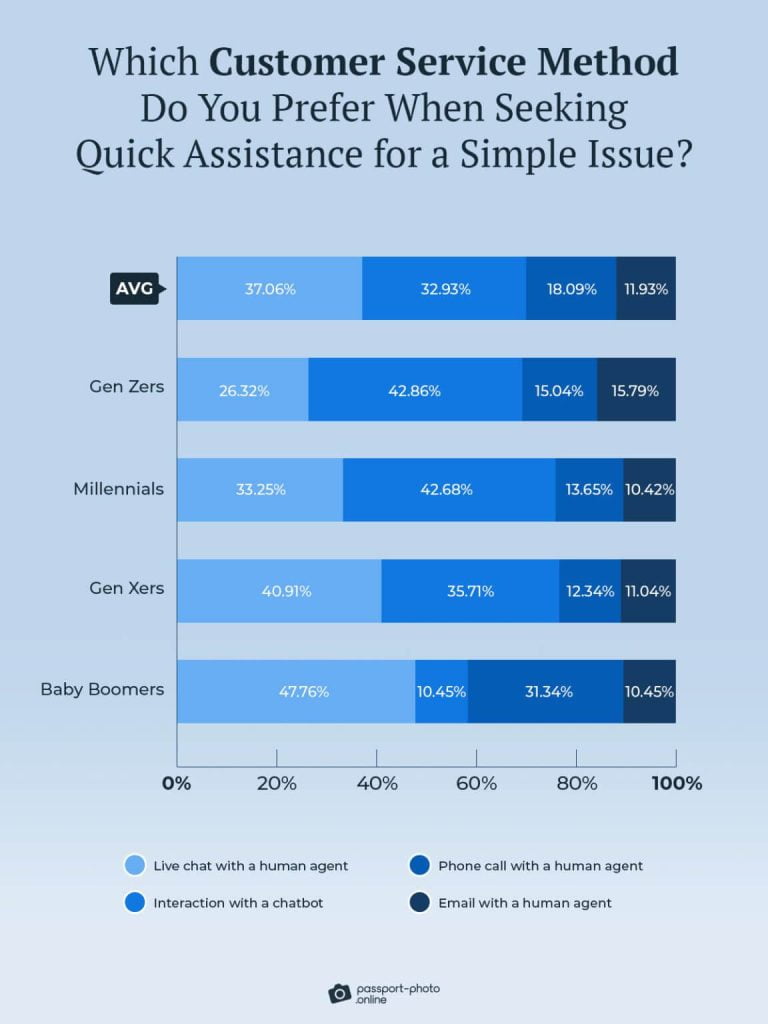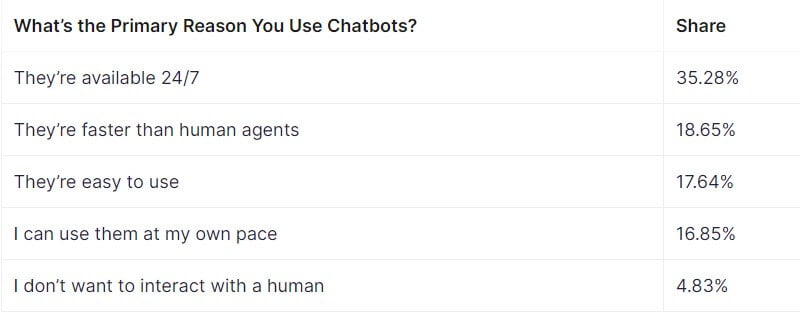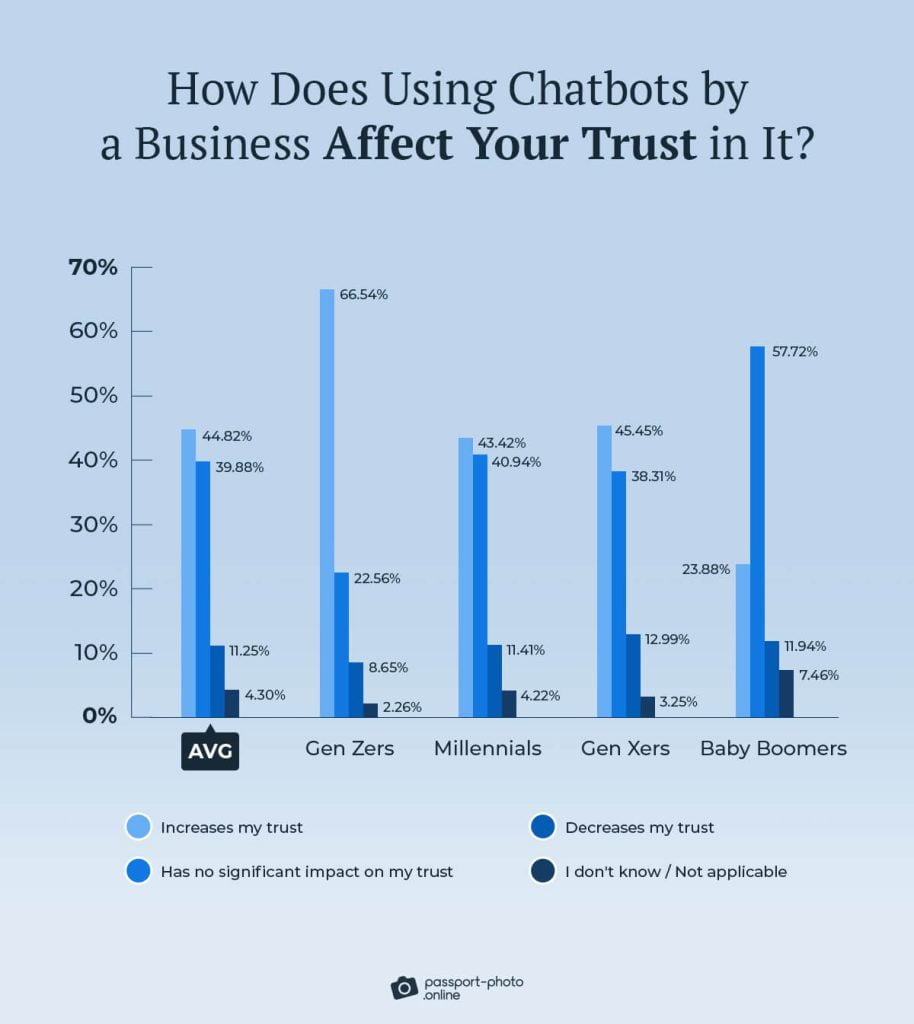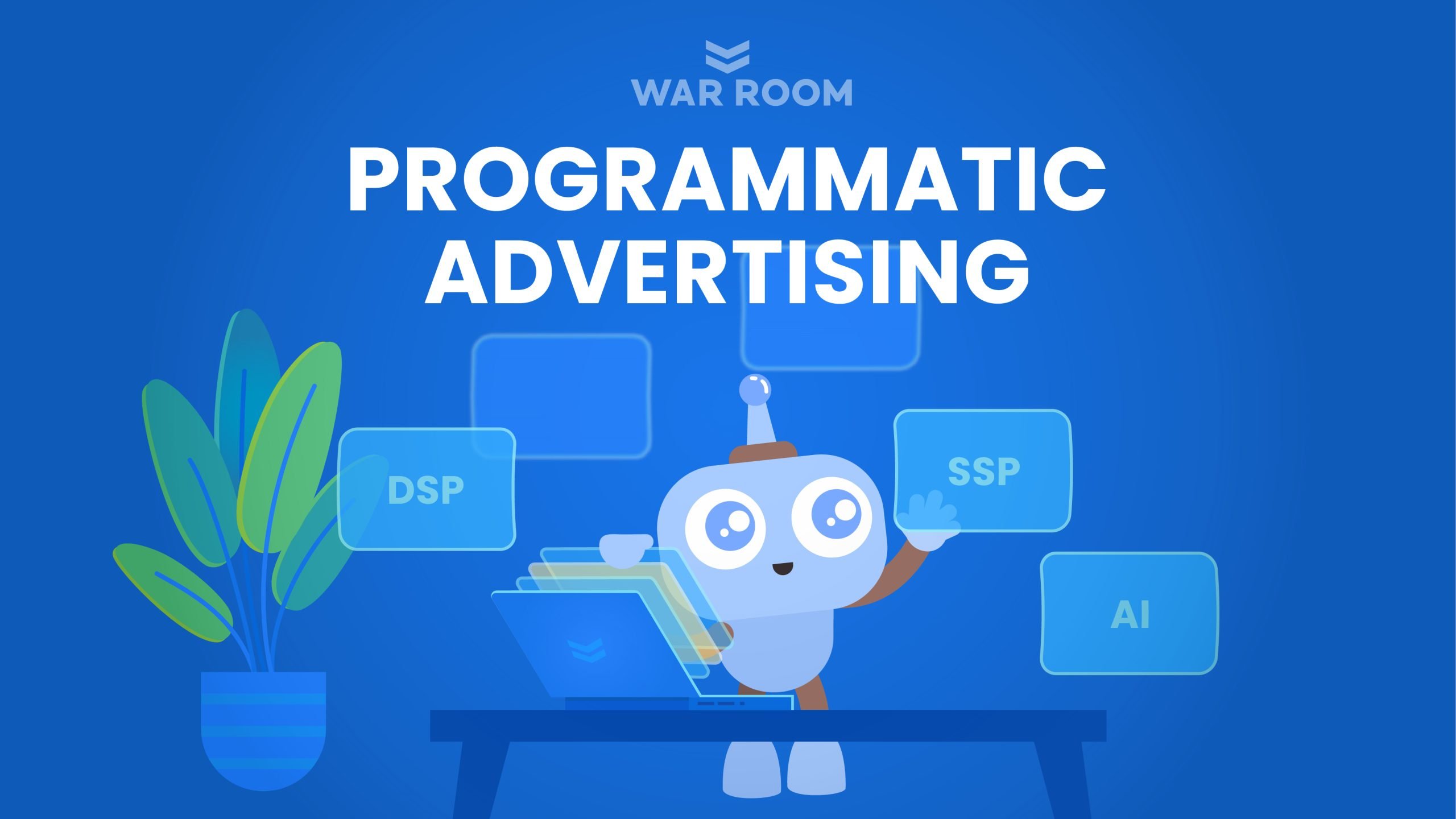From customer service to social media interactions, chatbots have seamlessly integrated into our online experiences. In fact, about 93% of American customers have interacted with a chatbot in the past 24 months. That’s according to a study conducted by Passport Photo Online – an AI tool for taking a passport photo. As technology continues to evolve, one might say that the future of online communication lies in the hands of these virtual assistants. Or so it seems.
What Do People Think About Chatbots?

While the numbers say that people use chatbots a lot, the question remains: is it because they want to, or because they have to? Data suggests that while human help is still for the win, there’s a growing trend of young generations preferring to use a chatbot rather than human help for simple issues.
The interesting thing is that Gen Zers and Millennials seem to prefer to use an AI chat instead of a live chat with a human agent. Could that be because a chatbot provides information much quicker and more efficiently than a person? Or is there another reason?
Why Do We Use Chatbots?
Picture this: you’ve been working your 9-5, only to go back home and start doing your house chores. Then, after a well-deserved break, you finally have the time to look for that vacation you so desperately need. But wait – it’s way past working hours, and there are no travel agents available to help you out. That’s where chatbots enter the conversation.
For 35% of Americans, the primary reason for using chatbots is their 24/7 availability. The beauty of chatbots is that they don’t have “business hours”. Whether it’s the crack of dawn or the dead of night, they’re there, ready to assist.
Another reason for using chatbots instead of human help is that AI is much faster and effortless to use. The ability to use them at one’s own pace also helps. Surprisingly, almost 5% of Americans said that they use chatbots because they don’t want to interact with another person.

Chatbots and Digital Marketing
An interesting thing to keep in mind is that people tend to trust businesses with chatbots much more than the ones without them. This particularly applies to Gen Zers (66.54%). Baby Boomers, on the other hand, aren’t swayed by chatbots as much. It does, however, prove a point that chatbots are something worth investing in.

Looking at the data, it’s hard to ignore the potential chatbots might bring to businesses. Especially for digital marketing, the possibilities are big.
A client searching for information after working hours won’t find the help of a customer service rep anywhere, even on your competitors’ sites. Your website is your 24-hour salesperson and gives you a chance to deliver great customer service, even in the middle of the night.
Having a chatbot on your website may increase the chances of getting a lead! For example, you can create a pop-up chatbot with the possibility of scheduling a conversation with one of your sales reps the next day. Or, you could design a chatbot that provides immediate travel recommendations based on the client’s preferences.
These possibilities increase the chances of turning a lead into a customer. Without a chatbot on your site, there’s a high chance that the potential client will forget about you after finding such help on one of your competitors’ websites.
Balancing Chatbots and the Human Touch in Digital Marketing
Let’s be fair, human resources are limited (and need to sleep sometimes). On the other hand, chatbots can manage thousands of interactions at the same time, ensuring customers always get a timely response, even at night. This might make you wonder – are chatbots becoming a better help than people?
While chatbots may be efficient and available around the clock, they can’t replace the human touch. Empathy, personalized touch, and a deep understanding of the context are something that only people can offer.
It’s essential to understand that effective digital marketing efforts could not exist without the human touch. Yes, chatbots provide great help, but they aren’t enough. It’s better to think of chatbots as a way to complement the work of a digital marketing team.
Think of it this way: Chatbots are like the helpful concierge at a hotel’s front desk. They can provide directions, answer frequently asked questions, and make reservations. But for in-depth help, you’d want to talk to someone more insightful – an assistant that will give you personalized directions
The future of digital marketing lies not in choosing between chatbots and humans but in using both of them. This way, it’s possible to create a better and more personalized customer experience, maximizing efficiency without losing that all-important human touch.
For related reading, check out: “How AI is Revolutionizing Digital Marketing“.
Guest Author

Martyna Inkielman is a content writer at PhotoAiD – a service that allows you to take a passport photo at home. She enjoys writing about traveling and social media. In her free time, Martyna can be found exploring new cuisines, painting, or taking analog photos.





